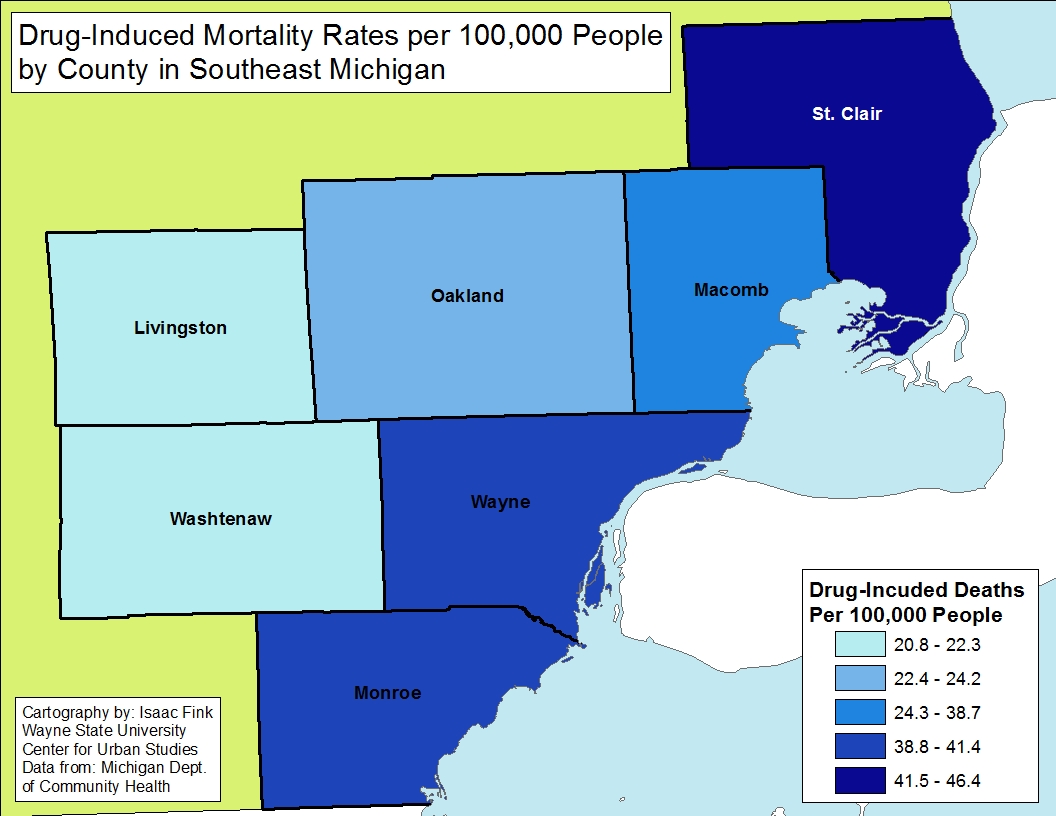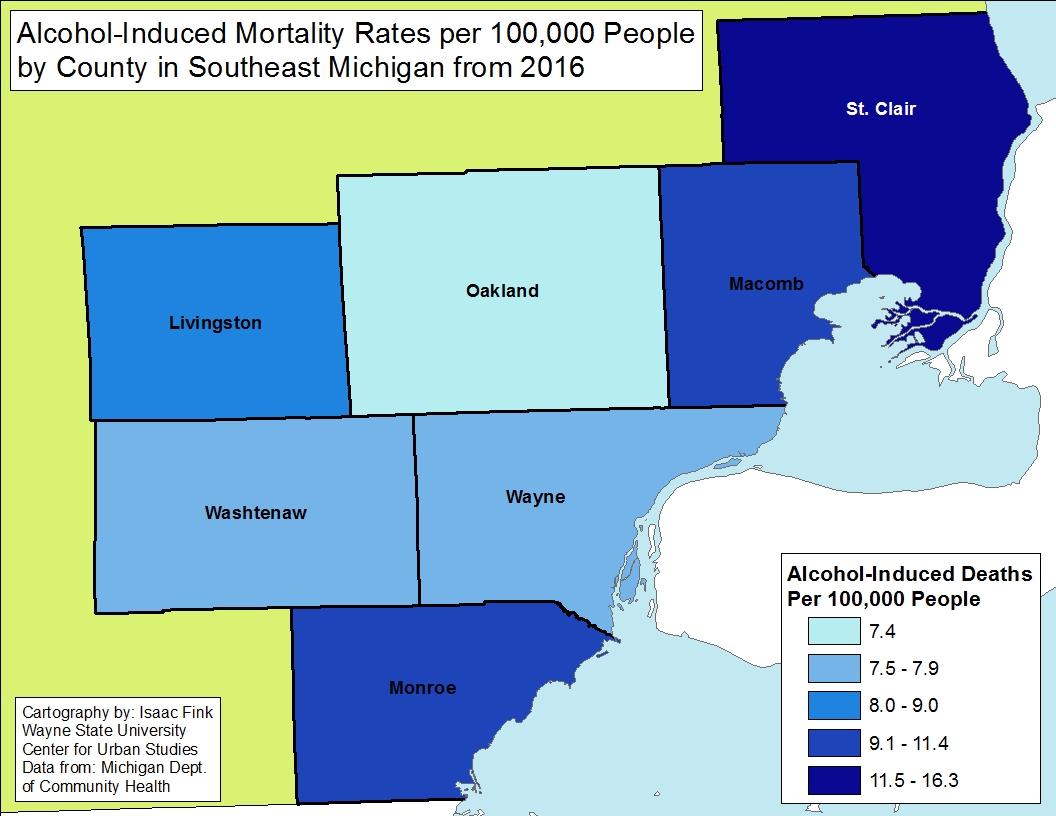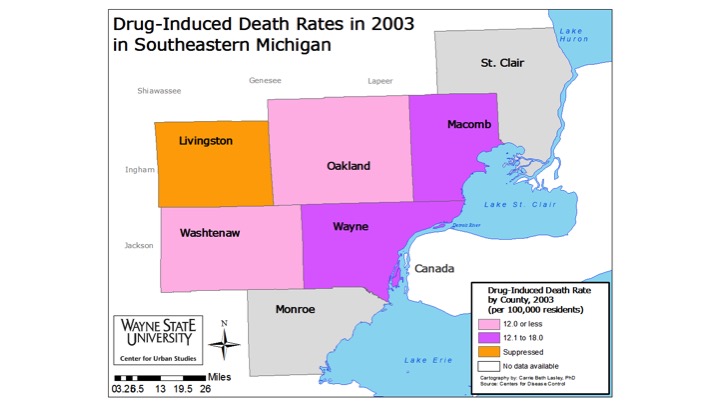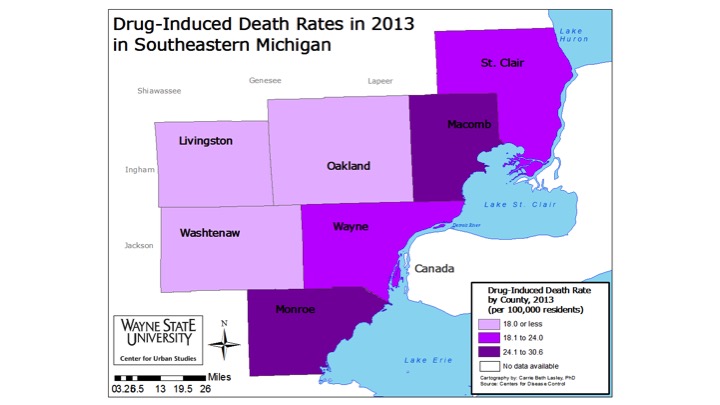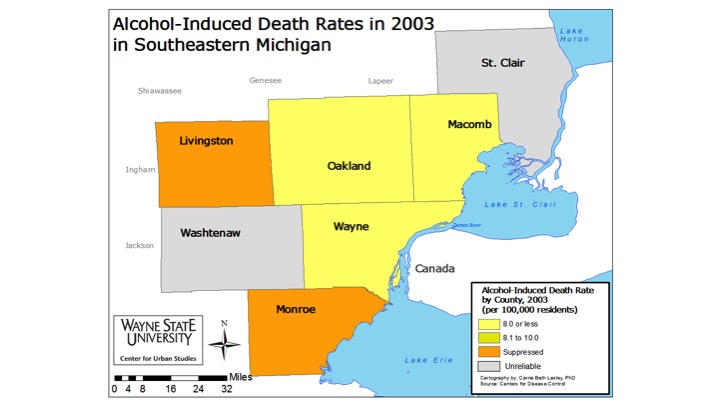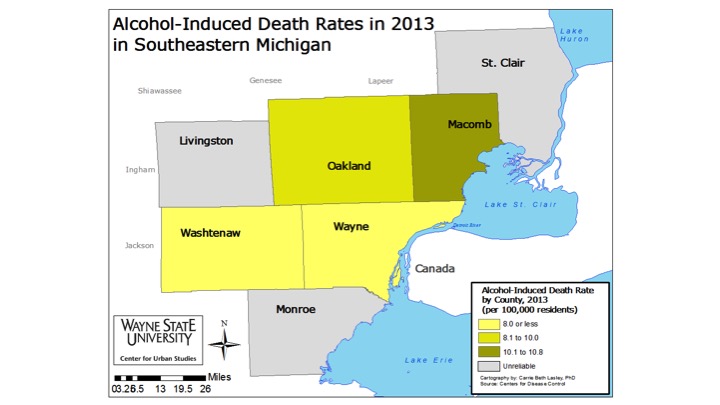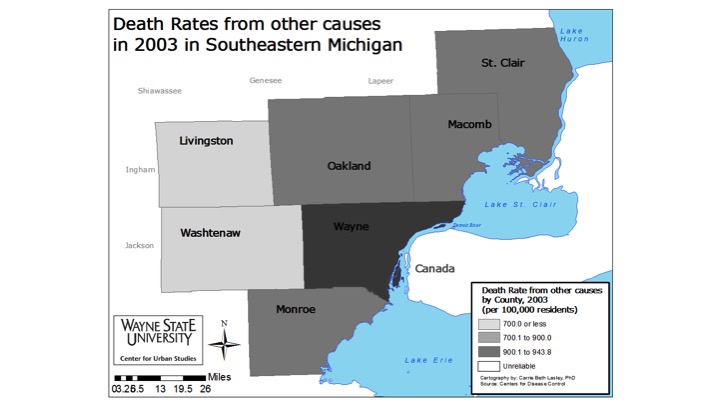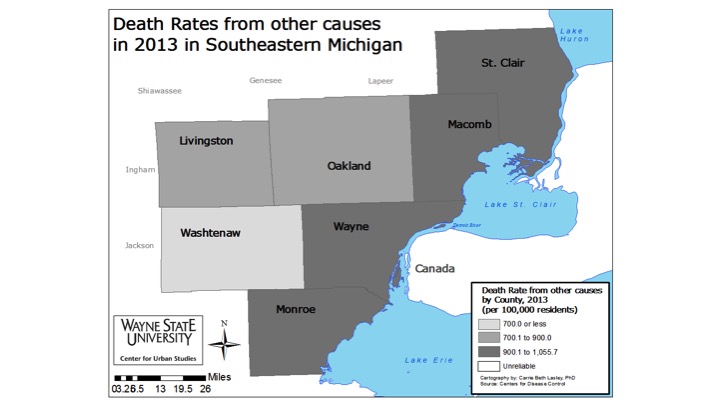According to the most recent data from the Michigan Department of Health and Human Services, drug-induced death rates are higher throughout Southeastern Michigan than alcohol-induced death rates. In 2016, according to the data, St. Clair County had the highest drug-induced death rate at 46.4 per 100,000 residents; Wayne County had the second highest rate at 41.4 per 100,000 residents. Regionally, Washtenaw County had the lowest rate at 20.8 per 100,000 residents. According to a recent New York Times article that focuses on 2017 data from the Centers for Disease Control, Michigan experienced more than a 10 percent increase in overdose deaths between 2016 and 2017, much of which can be attributed to synthetic opioids. The article states that with increased funding for public health programs related to mental health and substance abuse policies there is “optimism” that overdose death rates will at least begin to stabilize in the future. According to the Michigan Department of Health and Human Services, Michigan’s drug-induced death rate was 9 in 2000, having only continued to increase to 27.5 per 100,000 residents in 2016. All counties in the Southeastern Michigan region had seen similar increases in that time period as well.
While Wayne County had one of the highest drug-induced mortality rates in Southeastern Michigan, it had one of the lowest alcohol-induced mortality rates at 7.9 per 100,000 residents in 2016. The only other two counties in the region with lower alcohol-induced mortality rates were Oakland (7.4) and Washtenaw (7.7). St. Clair County had the highest alcohol-induced mortality rate at 16.3 per 100,000 residents in 2016.
Although the media attention has not been as high on alcohol-induced deaths as drug-induced deaths, a recent University of Michigan study did show that deaths related to cirrhosis (a liver disease often related to alcohol consumption) increased 65 percent between 1999 and 2016; it also stated there was a 10.5 percent increase in cirrhosis related deaths for 25-34 year olds.
